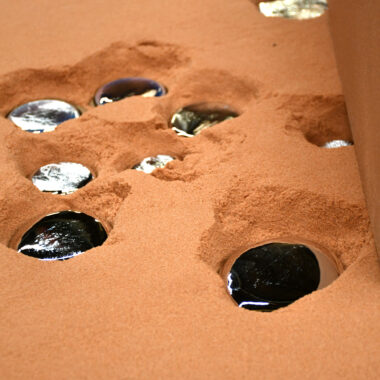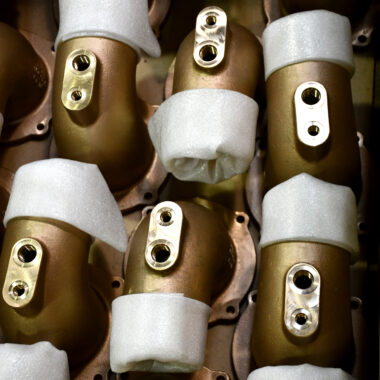Precision in Practice: The Art About Aluminum Casting
Precision in Practice: The Art About Aluminum Casting
Blog Article
Crafting Perfection: How to Attain High-Quality Aluminum Castings Whenever
In the realm of aluminum casting, the pursuit of perfection is a continuous trip that requires a meticulous method and a keen understanding of the ins and outs entailed. Attaining constant top quality light weight aluminum castings demands a thorough grasp of the processes, from selecting the proper alloy to executing precise mold and mildew styles and thoroughly managing casting criteria.
Comprehending Aluminum Spreading Procedures
Light weight aluminum casting procedures, necessary in the production market, entail the elaborate makeover of liquified light weight aluminum right into strong forms through a series of meticulously regulated actions. Understanding these processes is extremely important to achieving top notch light weight aluminum spreadings regularly - about aluminum casting. The key methods made use of in aluminum spreading are die casting, sand casting, and financial investment spreading

Each of these processes has its benefits and is chosen based on factors like complexity, volume, and desired surface of the aluminum casting. about aluminum casting. Understanding the complexities of these techniques is vital for producers intending to produce high-quality aluminum spreadings constantly
Selecting the Right Aluminum Alloy
Picking the suitable aluminum alloy is a vital decision in the manufacturing of premium light weight aluminum spreadings. The selection of alloy considerably impacts the homes and qualities of the final item. Different light weight aluminum alloys provide differing levels of stamina, rust resistance, machinability, and thermal conductivity. When selecting an aluminum alloy for casting, it is vital to consider the particular requirements of the application to make certain optimum efficiency.
One of the most commonly utilized light weight aluminum alloys for spreading is A356 - about aluminum casting. For applications requiring high toughness, 7075 aluminum alloy is a preferred choice due to its outstanding strength-to-weight proportion.
In enhancement to mechanical residential or commercial properties, factors to consider such as cost, accessibility, and post-casting procedures should additionally affect the option of the ideal aluminum alloy. By thoroughly assessing these variables, suppliers can make certain the production of premium light weight aluminum spreadings that satisfy the preferred specs.
Carrying Out Correct Mold Design
Creating an efficient mold and mildew style is essential for guaranteeing the effective production of premium light weight aluminum spreadings. Proper mold design plays a significant role in achieving the wanted characteristics of the final item. To carry out a successful mold and mildew layout, variables such as material circulation, cooling rates, and part geometry should be thoroughly taken into consideration.
One key aspect of mold layout is making certain proper dental filling and solidification of the light weight aluminum within the mold dental caries. This involves designing runner and gating systems that promote smooth steel flow and protect against problems such as air entrapment or insufficient filling. Furthermore, including cooling networks into the mold and mildew design aids regulate solidification rates and lower the danger of porosity or shrinkage issues.

Controlling Spreading Parameters

Guaranteeing Post-Casting Top Quality Checks
To keep the high quality of aluminum castings, extensive post-casting top quality checks are vital. After the casting procedure is finished, it is vital to make sure that the last products meet the desired requirements and standards. One of the key quality checks includes inspecting the surface coating of the my explanation spreadings to identify any issues such as porosity, splits, or surface irregularities. This visual examination is commonly supplemented by non-destructive testing methods like ultrasonic screening or dye penetrant evaluation to discover interior imperfections that might jeopardize the integrity of the casting.
Dimensional precision is an additional crucial aspect that should be confirmed during post-casting top quality checks. Dimensions of key measurements and resistances ought to be required to confirm that the spreadings adapt to the called for specifications. Additionally, mechanical buildings such as solidity, tensile stamina, and impact resistance may need to be reviewed through product screening to ensure that the spreadings possess the required toughness and resilience for their intended application.
Conclusion
To conclude, achieving high-quality light weight aluminum castings calls for a detailed understanding of the casting procedures, selecting the appropriate alloy, developing molds effectively, regulating casting criteria carefully, and conducting post-casting high quality checks carefully. By complying with these actions, producers can consistently produce aluminum castings that fulfill the highest standards of top quality and performance.
Attaining constant high-quality aluminum spreadings demands a comprehensive grasp of the procedures, from selecting the proper why not try these out alloy to executing exact mold designs and meticulously managing spreading specifications. The primary methods made use of in light weight aluminum casting are die casting, sand casting, and financial investment spreading.
Investment spreading, also understood as accuracy casting, includes creating wax patterns that are coated in ceramic to form molds.Choosing the ideal aluminum alloy is an essential decision in the manufacturing of premium aluminum castings.Making certain precise control over casting criteria is vital for preserving consistency and top quality in light weight aluminum casting manufacturing.
Report this page